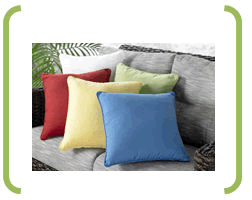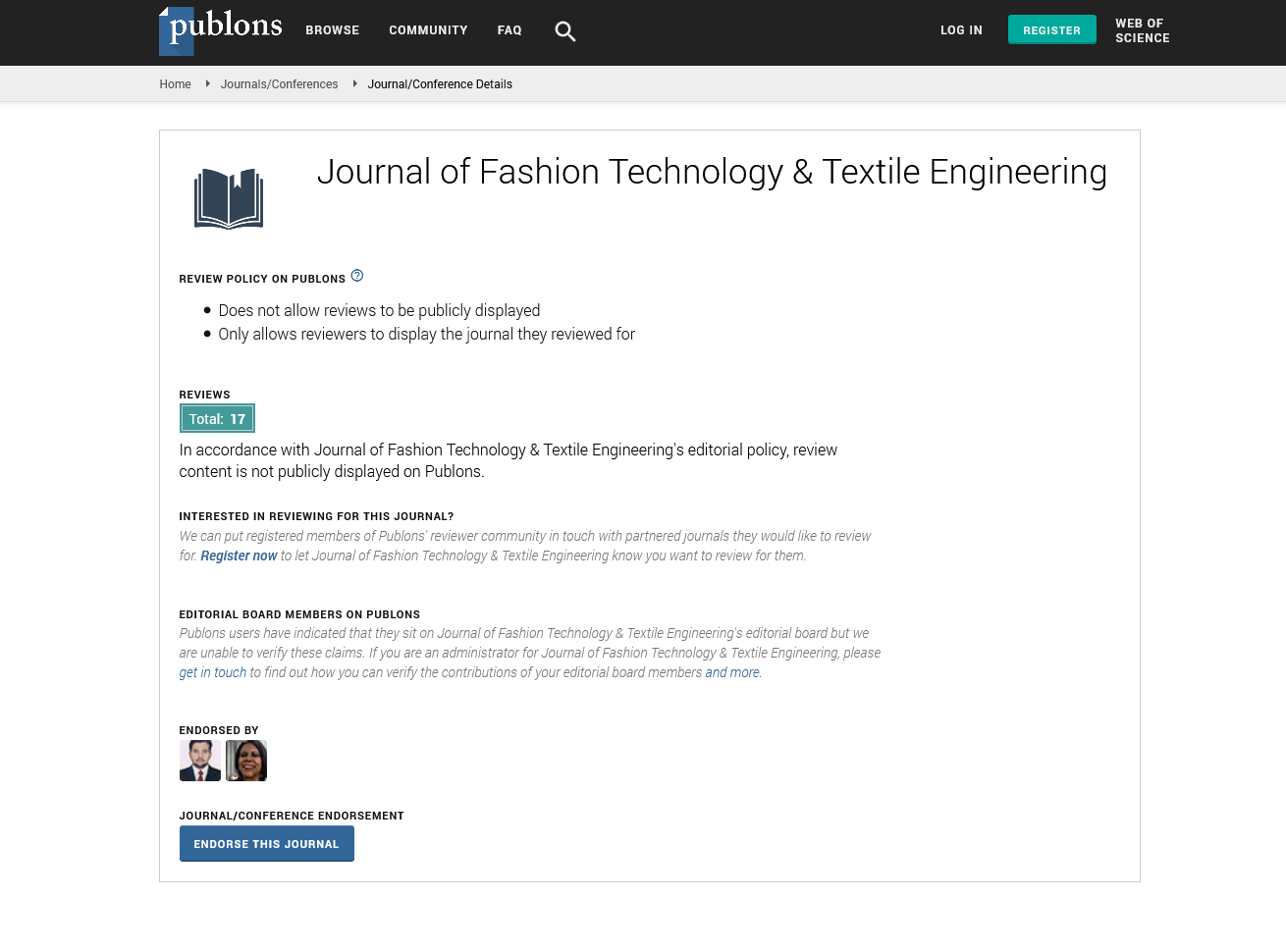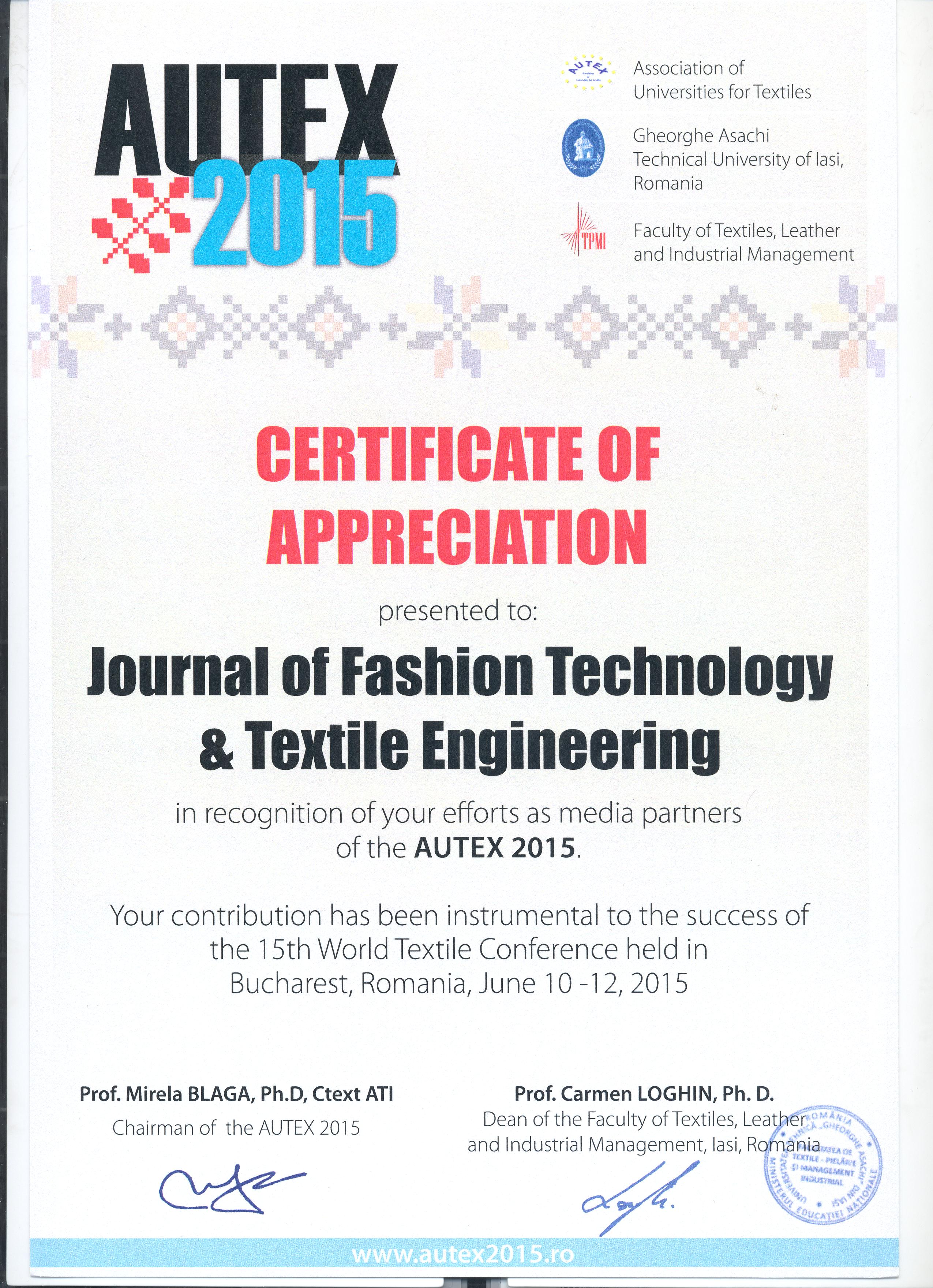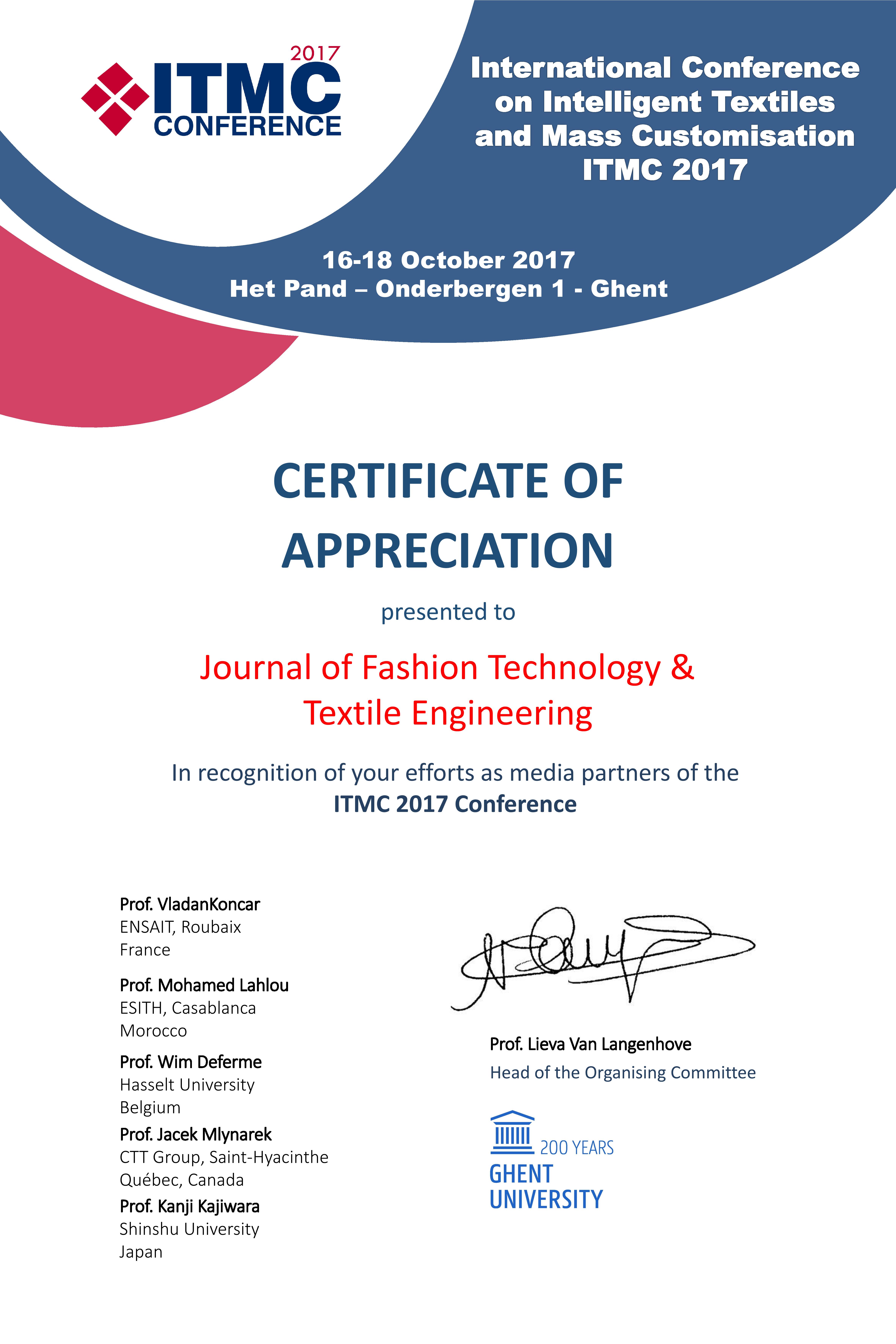Review Article, J Spine Neurosurg Vol: 13 Issue: 1
Importance of Cushion in Upholstry
Jaya Baju Chalakkal*
Department of Costume and Fashion Designing, Nirmala College of Arts and
Science, Kerala, India
*Corresponding Author:Jaya Baju Chalakkal
Department of Costume and Fashion Designing, Nirmala College of Arts and Science, Kerala, India
E-mail: jayab.ncas@nirmalacollege.edu.in
Received date: 26 November, 2023, Manuscript No. JFTTE-23-121176;
Editor assigned date: 28 November, 2023, PreQC No. JFTTE-23-121176 (PQ);
Reviewed date: 12 December, 2023, QC No. JFTTE-23-121176;
Revised date: 22 January, 2025, Manuscript No. JFTTE-23-121176 (R);
Published date: 29 January, 2025, DOI: 10.4172/2329-9568.1000382
Citation: Turk OI, Incesoy MA, Misir A, Tas SK, Turgut E, et al. (2025) Importance of Cushion in Upholstry. J Spine Neurosurg 13:1.
Abstract
A cushion, often overlooked in its significance, plays a crucial role in enhancing comfort and aesthetics within our living spaces. Beyond its functional purpose of providing support and softness, a cushion serves as a design element, capable of transforming the ambiance of a room. Whether adorning a sofa, chair, or bed, cushions contribute to the overall visual appeal and cohesiveness of interior decor. The evolution of cushions spans cultures and centuries, reflecting changes in design trends, materials, and craftsmanship. From traditional embroidered cushions to modern, minimalist designs, these versatile accessories offer a canvas for personal expression and style.
Keywords: Softness; Interior decor; Craftsmanship; Cushion; Bed
Introduction
In today's diverse market, cushions come in an array of shapes, sizes, colors, and textures, allowing individuals to curate their surroundings to match their unique preferences. As we delve into the world of cushions, we uncover not only their tactile and visual allure but also their therapeutic potential. Ergonomically designed cushions provide essential support for posture and alleviate discomfort, emphasizing the symbiotic relationship between functionality and aesthetics.
This exploration of cushions aims to unravel the layers of their significance, from the cultural and historical threads that weave their story to the contemporary trends that shape their design [1]. Join us in discovering how something as seemingly simple as a cushion can weave comfort, style, and personality into the fabric of our daily lives.
Literature Review
Cushion
A cushion is a soft furry bag of some ornamental material. It is stuffed with wool or hair, feathers and polyester staple fiber. Now-adays mostly used Non-woven material or even paper torn into fragments. It may be used for sitting or kneeling upon, or to soften the hardness or angularity of a chair or couch. Decorative cushions often have a patterned cover material, and are used as decoration for furniture. A cushion is also referred to as a bolster, hassock, headrest and a sham. Cushions and rugs can be used temporarily outside to soften a hard ground. They can be placed on sun loungers and used to prevent annoyances from moist grass and biting insects. Some dialects of English use this word to refer to throw pillows as well [2]. The cushion is a very ancient article of furniture; the inventories of the contents of palaces and great houses in the early middle Ages constantly made mention of them. Cushions were then often of great size, covered with leather, and firm enough to serve as a seat, but the steady tendency of all furniture has been to grow smaller with time. Today, the cushion is considered an upholstery item.
Types of cushion
There are three main types of cushion interior-foam, feather or polyester fiber. Customarily, thin layers or sheets of foam are placed on the suspension system and covered by either the main decorative fabric or by a less expensive non-visible platform or lining cloth to reduce wear on reversible cushions. Thus a platform is formed for the seat, back and arm ‘sitting’ surfaces of the sofa, according to the design, onto which separate upholstered cushions are placed. These cushions may be fixed, loose or detachable via a series of zip fastenings [3].
Foam is a popular filling for upholstery. It is resilient, flexible, easy to manipulate and can be moulded or shaped to meet the most complex upholstery styles and designs. Upholstery seat cushions are predominantly filled with foam. It is normal for them to soften 20-30% in the first six months under normal use, until they find their natural balance.
Foam seat cushions are often wrapped in polyester fibre wadding to give an even softer feel for initial comfort and to reduce wear. The density of the foam used will vary depending on different price points and there are all different types which still offer great performance used to suit your budget.
The most common and affordable filling is polyurethane foam. The higher the density, the firmer the cushion will be. Foam can be wrapped in softer material or cotton to make it softer. Dacron (a type of polyester fabric) wrapped foam is the cheapest option, but again it won’t last as long (Figure 1).
Figure 1: Different types of cushion.
Discussion
Feather and fiber
Modern upholstered furniture predominantly contains feather or fibre filled back and/or seat cushions. Both are popular for comfort because you sit ‘in’ them rather than ‘on’ them. But they do require a lot of plumping-up to retain their shape, and some people can be allergic to feathers inside. Feather and/or fibre cushion in-fills are often produced in sections to reduce the likelihood of the filling moving around inside the cushion where downward movement could be a problem [4,5]. These cushions can usually be restored to look like new by smoothing out creases to avoid premature fabric wear and frequent plumping for shape retention. There is no universal standard for the plumping of seat and back cushions, but your retailer will be able to give you specific advice about care requirements.
Importance of cushion
When it comes to choosing new cushions it might seem like a daunting prospect especially when you consider the huge choice available. The cushions in your home are a reflection of the decorating style that you are trying to create and a beautiful selection of cushions can give the finishing touches to any room.
Choices of fillings
To help you make your decision let’s take a look at the different types of cushions in a bit more detail. Let's start with the more widely available cushion types, these tend to be less costly because the components are man-made on a large scale.
Foam and latex fillings: Costs are kept low by using easily sourced materials and the more commonly used fillings are foam or latex. These are extensively used in the manufacture of both cushions and upholstery because foam tends to retain its shape well and is very strong and durable. It is also easily cut into virtually any shape or size and this makes it ideal for cushion fillings where several sizes might be needed [6].
Foam: Foam filling is made from a polyurethane mixture that is combined with other elements and left to set in a mould, it can be extremely firm or very soft depending on the mix used. Foam is very versatile and is also often chopped or minced into small pieces to give even more softness and ‘give’ to your cushion.
Hollow fibre and ball fibre: Other widely used and fairly inexpensive cushion fillings are hollow fibre and ball fibre. Again these are manmade and tend to give a soft type of cushion filling. Hollow fibre is soft and springy and looks like cotton wool and ball fibre is small round fibre balls.
Feather and down: The more expensive fillings are feather and down or a combination of both. All down cushions can be very expensive and a 70% to 30% mix is more common although other percentages are available. The more down in the mix the more expensive the cushion will be. Both feather and down give soft comfortable cushions and pillows.
So now we have an idea of the fillings we have to choose from let's take a look at the fabric that our cushion cover may be made from, again the choice is enormous.
Cushion covers choice
Sensitive skins: Something to bear in mind here perhaps is whether or not you or someone in the household might have sensitive skin because some man-made fabrics can aggravate such conditions. If this is the case always try to go for natural fabrics like cotton, silk or wool.
Synthetic fabrics: The majority of cushions today have either manmade or a mix of synthetic and natural fibres to keep cost to a minimum. Polyester/cotton, satin and nylon are all widely used and give a durable and washable fabric [7].
Natural fabrics: 100% cotton, wool and silk are examples of natural fabrics. With cotton being the most durable. Silks and pure wools are beautiful, but are not always easy to launder and may require specialist cleaning which makes them unsuitable when used the family sofa.
Size and shape: Size and shape of your cushions is another thing to consider and again there are several sizes and shapes to choose from. Most regular cushions tend to be about 18 in square, but the larger cushion has seen an increase in popularity recently and circular cushions are a stylish addition to any display.
The purpose of your cushions
• The next thing to think about is what you will be using your cushion for as this will have a bearing on the type of cushion you need. There are cushions to fit almost any room, from a sofa in the living room to cushions used in bedrooms.
• If you have children or pets then your cushion type will probably need to be durable, washable and perhaps stain resistant. If you just want some pretty cushions to pile on your bed then perhaps both the filling and the cover fabric could be less practical and more decorative.
• If you want a really soft seat then consider down cushions. These are considered to be the premium choice, but this does mean they are also among the most expensive. High quality cushions will have down-proof ticking (a strong, durable material) under the upholstery fabric to prevent feathers from poking through. Cushions filled just with down require daily maintenance to give the best performance [8].
• Down used in combination with other materials is also a good option, but can again be costly. Pads made out of a polyester fibre and down, known as Blendown pads, are wrapped around foam. These pads can also be used with springs that have been wrapped up in foam. The result is a soft surface with a strong, resilient support inside. This is a good option as the cushions do not lose their shape easily.
Conclusion
In conclusion, the humble cushion, often underestimated in its significance, emerges as a multifaceted element that goes beyond mere functionality. Its role in enhancing comfort and aesthetics within our living spaces is undeniable, turning it into a pivotal design element capable of transforming the ambiance of a room. From its historical roots, seen in the inventories of palaces in the early middle ages, to the contemporary market offering diverse shapes, sizes, colors, and textures, the evolution of cushions mirrors changes in design trends, materials, and craftsmanship.
Cushions, whether adorning a sofa, chair, or bed, contribute to the overall visual appeal and cohesiveness of interior decor. They have transcended their traditional use as a soft bag for sitting or kneeling, evolving into decorative pieces that reflect personal expression and style. Beyond their visual and tactile allure, cushions also offer therapeutic potential, with ergonomically designed options providing essential support for posture and comfort.
Exploring the types of cushions delves into the interior choices of foam, feather, or polyester fiber fillings. Each type has its unique characteristics, contributing to the overall comfort and durability of the cushion. The importance of cushions extends to their role as upholstery items, impacting the overall look and feel of furniture.
Understanding the fillings and cover choices for cushions, including foam, latex, hollow fiber, ball fiber, and feather/down, allows for a personalized selection based on preferences, skin sensitivity, and intended use. The size, shape, and purpose of cushions also play a crucial role in determining the ideal choice for different rooms and lifestyles.
In the vast landscape of cushion options, considerations such as durability, washability, stain resistance, and decorative appeal come into play. Whether choosing synthetic fabrics for practicality or indulging in the luxury of natural fabrics like cotton, silk, or wool, the selection process involves a thoughtful balance between functionality and aesthetics.
In essence, the world of cushions unfolds as a realm of endless possibilities, offering not only a soft spot to rest but also a canvas for personal expression and style within our homes. As we embrace the significance of cushions in our daily lives, we recognize their power to weave comfort, style, and personality into the fabric of our living spaces.
References
- Santos E, Lima TM, Gaspar PD (2023) Optimization of the production management of an upholstery manufacturing process using lean tools: A case study. Appl Sci 13: 9974.
- Kozlowski R, Muzyczek M, Mieleniak B (2004) Upholstery fire barriers based on natural fibers. J Nat Fibers 1: 85-95.
[Crossref]
- Noskin GA, Bednarz P, Suriano T, Reiner S, Peterson LR (2000) Persistent contamination of fabric-covered furniture by vancomycin-resistant enterococci: implications for upholstery selection in hospitals. Am J Infect Control 28: 311-313.
[Crossref] [Google Scholar] [PubMed]
- Pitts WM, Werrel M, Fernandez M, Long MA, Eisenberg EA, et al. Effects of upholstery materials on the burning behavior of real-scale residential upholstered furniture mock-ups. Fire Mater 45: 127-154.
- Kozlowski R, Malgorzata M, Bozena M (2011) Comfortable, flexible upholstery fire barriers on base of bast, wool and thermostable fibres. Polym Degrad Stab 96: 396-398.
- Ibrahim GE, Abdel-Tawab HK. Utilizing aesthetic values of folklore motifs in the design of upholstery fabrics used in touristic villages. Int Des J 11: 361-371.
- El-Esaad A, Ibrahim ME (2018) Nano particles as visual stimuli in the design in printed contemporary upholstery. Int Des J 8: 177-192.
- Holley D (1981) Upholstery springs. Furniture History 17: 64-67.
 Spanish
Spanish  Chinese
Chinese  Russian
Russian  German
German  French
French  Japanese
Japanese  Portuguese
Portuguese  Hindi
Hindi 



